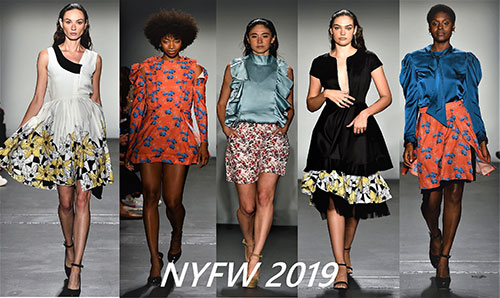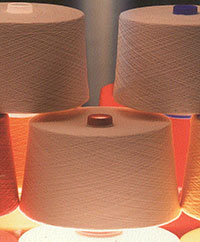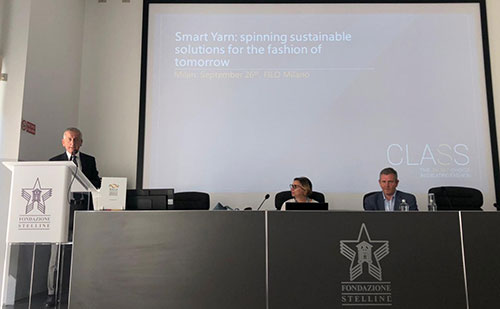FW
Marks & Spencer has not yet attained a turnaround of its clothing and home business yet. Significantly more action is needed to bring these back on track. Hard work in improving products has not been backed up by infrastructure improvements. The retailer suffered problems with planning and stock visibility, resulting in some empty shelves. M&S is overhauling its men’s wear collections, reducing the proportion of suits in its men’s wear stock to reflect contemporary customers.
But there are some positive signs in the brand’s digital and food arm. M&S will boost its food business through the transformation plan by working to lower costs and modernise its supply chain.
In the year M&S opened 37 stores and modernised a further 56. Where M&S made progress in pruning options and introducing slimmer fits and more mid sizes, the customer response was very strong. For instance, its new denim launch produced an initial 20 per cent sales uplift and sales of women’s jeggings were up 30 per cent. During the year, M&S implemented the market right pricing program across markets. The program’s cumulative performance since implementation was encouraging with sales up eight per cent and volumes up 20 per cent, following a net ten per cent reduction in selling prices. This performance is helping to build confidence with its partners to reinvest into the business.
Destination Maternity is fighting for survival. It plans to close about 50 stores over the next six months. Destination Maternity’s revenues already are declining — net sales for the fiscal year’s first half are down 10.3 per cent from the same period in fiscal 2018. Comparable sales, those in stores open during both periods, fell 8.7 per cent from a year ago. The company had 937 retail sites at the end of its latest quarter. That compares to 1,114 a year earlier and 1,220 in January 2017. Destination Maternity is working with advisors to explore financial and strategic alternatives, including the possible sale of the business or some of its assets. The firm this summer slashed its workforce to cut costs. A default on loans could result in the company needing to seek bankruptcy protection to protect stakeholder value.
Destination Maternity, based in the US, runs the brands Motherhood Maternity, A Pea in the Pod and Destination Maternity. In addition to its retail locations in the United States, Canada and Puerto Rico, it also sells its products through franchise agreements in South Korea, Mexico, Israel and India.
Maternity wear has become trendy, stylish, form-fitting, and designed to highlight a woman’s curves during pregnancy. The Asia-Pacific region is showing the strongest growth.
The World Textile Merchandising Conference was held in China, September 27 to 29, 2019. The event linked up high-end and high-quality resources in the global industrial chain. There were leaders from textile and apparel industry clusters, managers of textile and apparel industry associations in about 25 countries, as well as representatives from textile and apparel research and design institutions, colleges and universities, global textile fabrics, clothing, fibers, machinery, home textiles, dyeing and finishing. Eighteen conferences and supporting activities, such as industrial seminars, academic exchanges, intellectual property rights, international competitions, skills competitions and visits, enriched the three-day agenda. It clearly presented the development and future of the global textile industry under the new situation. The world’s textile industry is at an important juncture of transformation and development.
The conference focused on the theme of open collaboration, technology-driven and fashion transformation and explored in depth the issues of value chain restructuring of the global textile industry chain and China’s position and development direction in the new layout of the world textile fashion industry. The conference focused on cooperation between science and technology, the connection between textile academic and scientific research achievements and resources and capital markets, as well as the market value and aesthetic value of creative design in the context of industry.
Cotton output in India is set to surge after heavy rains. In Gujarat, the top cotton producing state, rainfall was more than 40 per cent higher than the long-term average from June to September, while in Maharashtra, the second largest, rain was 30 per cent above normal. Planted area also increased to 12.77 million hectares from 12.1 million a year earlier. The country’s cotton exports may climb to five million bales this year. Sales to China could advance to as much as 1.5 million bales from 1.2 million a year earlier. Rising shipments from the country will intensify competition among global exporters as they struggle to grab a bigger share of the Chinese market. Since India is facing increased competition in almost all markets, incentives will make exports attractive.
India is the world’s largest cotton producer. Damage from excess rain in some areas may be offset by higher yields. The crop may be 15 per cent higher than the output a year earlier. But a higher supply will depress world prices, hurting farmer incomes and benefiting textile manufacturers. India will be adding to global supply at a time when prices are near their weakest in more than three years.
The 11th edition of the Bangladesh Denim Expo will provide an insight into the capabilities of the Bangladesh apparel industry and a forum for the local and international visitors to congregate and learn about the latest denim developments from a host of leading industry exhibitors and experts in their field.
To be held from November 5 and 6, 2019 at the International Convention City Bashundhara, Dhaka Bangladesh, the expo will feature over 100 exhibitors and over 9,000 visitors. It will be held in a new enlarged show space area.
The theme of the expo will be Responsibility. It will highlight the fact that all those involved within the apparel industry have a degree of responsibility in terms of social responsibility, environmental responsibility and economic responsibility to ensure that apparel product is being produced in the most ethical, environmentally friendly, sustainable manner possible, with the highest regard for worker’s safety and well-being.
The aim of the expo is to address burning issues of the day with regard to the long term sustainability of the Bangladesh denim industry and the larger global apparel sector.
American shoppers are helping boost the European retail market says Planet Shopper Index. Looming fears of a US manufacturing recession and the growing threat of a trade war with China aren’t affecting American spending abroad, especially as the dollar remains strong against the euro and the pound. Fashion and beauty are among the main beneficiaries of tourist spending in the UK and Europe. Tax-free retail sales to US shoppers have risen in double-digits for 14 months in succession, with a 15 per cent year-on-year rise in July and a growth of 30 per cent earlier this year.
Emerging APAC economies are also driving European retail growth. Europe has seen rising spend on the part of consumers from India, the Philippines, Thailand and Indonesia. They have helped counter slowdowns from other major luxury spenders like Chinese and Russian tourists.
The ICC Cricket World Cup, hosted in the UK this year, saw an additional 80,000 Indian nationals visit the country, with tax-free sales booming 18 per cent in June. And Indians love luxury brands, the category accounting for 42 per cent of spending by Indian shoppers in the UK. Chinese and Gulf Co-Operation Council shoppers have been traditionally seen as Europe’s biggest luxury spenders.
 Exports of fashion and textile products from the UK to the USA will be hit with a 25 per cent tariff as a part of the ongoing dispute between the USA and the EU over subsidies granted to both Boeing and Airbus.
Exports of fashion and textile products from the UK to the USA will be hit with a 25 per cent tariff as a part of the ongoing dispute between the USA and the EU over subsidies granted to both Boeing and Airbus.
The list of products that will be face 25 per cent tariff includes cashmere jumpers, swimwear, bed linen and handbags. This is in addition to the normal duties which will apply. The US has threatened to introduce the tariffs as early as October 17 2019. It has been confirmed that these tariffs will apply even if the UK leaves the European Union with or without a deal.
Simon Cotton, Chief Executive of UKFT, said that these tariffs will have a significant impact on the UK knitwear industry. He urged all parties involved to come to an agreement quickly for the sake of British manufacturers and consumers.
Researchers from the Texas Tech University have developed a method to separate toxic dyes from wastewater. Hence, the global textile dyestuff market is expected to earn sustainable revenues at the back of improvements in waste management technologies. Moreover, the need for dye testing has also created a large playfield of opportunities for the market vendors.
According to a recent study, the global textile dyestuff market will expand at a moderate CAGR of 5 per cent over the period between 2018 and 2026. Furthermore, the total value of the global textile dyestuff market, which stood at US$ 5 billion in 2017, is expected to increase. The growth of the global textile dyestuff market largely relies on advancements in the clothing and apparel industry.
The need for dying garments and apparels is amongst the leading drivers of market demand. Furthermore, textile dying holds tremendous significance for the chemical industry as it helps in analysis of dye properties. Textile manufacturers are required to cater to the needs of a heterogeneous mix of consumers. This factor, coupled with availability of improved dying technologies, has played a vital role in market growth.
Textile manufacturers are making earnest efforts to improve their waste management procedures. Some of the leading vendors in the global textile dyestuff market are BASF SE, Archroma International, Huntsman International LLC., Bozzetto Group, Lanxess AG, and Dystar Group.
"ColorJet India, India’s biggest manufacturer of digital inkjet textile printers in association with Niti Singhal, a renowned fashion designer from the house of ‘Twee in One’, showcased their collection at Flying Solo at New York Fashion Week (NYFW) 2019. NYFW was held from September 6-11, 2019. It was attended by over 70 designers and 700 celebrity guests including Gigi Hadid, Priyanka Chopra and Kriti Sanon."
 ColorJet India, India’s biggest manufacturer of digital inkjet textile printers in association with Niti Singhal, a renowned fashion designer from the house of ‘Twee in One’, showcased their collection at Flying Solo at New York Fashion Week (NYFW) 2019. NYFW was held from September 6-11, 2019. It was attended by over 70 designers and 700 celebrity guests including Gigi Hadid, Priyanka Chopra and Kriti Sanon.
ColorJet India, India’s biggest manufacturer of digital inkjet textile printers in association with Niti Singhal, a renowned fashion designer from the house of ‘Twee in One’, showcased their collection at Flying Solo at New York Fashion Week (NYFW) 2019. NYFW was held from September 6-11, 2019. It was attended by over 70 designers and 700 celebrity guests including Gigi Hadid, Priyanka Chopra and Kriti Sanon.
The designs showcased consisted of a mix of cotton wrap satin fabric printed with reactive ink, polyester crepe fabric printed with disperse ink and cotton satin fabric printed with pigment ink.
Flying Solo is an innovative fashion brand, an organisation of designers and a platform,which is revolutionising fashion by making up-coming designers the main beneficiaries. The result is a hotbed of creativity, inspiration, and the most vibrant experience in New York City.
platform,which is revolutionising fashion by making up-coming designers the main beneficiaries. The result is a hotbed of creativity, inspiration, and the most vibrant experience in New York City.
ColorJet with its various Digital Printing Solutions provides a better and a sustainable way of printing. ColorJet printers has advanced capabilities to match the pace of ever evolving trends and has opened new avenues for many who are looking out for superb quality and innovative design.
Founded in 2004, ColorJet India, the largest manufacturer of digital inkjet printers in India, maintains its operations via two manufacturing facilities and sales offices spread across seven countries, which include India, China, Bangladesh, UAE and Sri Lanka. ColorJet India markets its products in 25 countries worldwide and has installed and implemented over 4,000 of its printing solutions and products across 450 cities around the world backed.
"C.L.A.S.S. partnered ROICA and Varvaressos at Filo-the international fair dedicated to yarn held in Milan from September 25- 26, 2019. The ROICA EF– GRS (Global Recycled Standard ) yarn is made with 58 per cent f pre-consumer recycled content. GRS guarantees its sustainable mission with a certification by the influential Textile Exchange, one of the most known and recognised global players in the market."
 C.L.A.S.S. partnered ROICA and Varvaressos at Filo-the international fair dedicated to yarn held in Milan from September 25- 26, 2019. The ROICA™ EF– GRS (Global Recycled Standard ) yarn is made with 58 per cent f pre-consumer recycled content. GRS guarantees its sustainable mission with a certification by the influential Textile Exchange, one of the most known and recognised global players in the market.
C.L.A.S.S. partnered ROICA and Varvaressos at Filo-the international fair dedicated to yarn held in Milan from September 25- 26, 2019. The ROICA™ EF– GRS (Global Recycled Standard ) yarn is made with 58 per cent f pre-consumer recycled content. GRS guarantees its sustainable mission with a certification by the influential Textile Exchange, one of the most known and recognised global players in the market.
The ROICA V550 breaks down without releasing harmful substances under the testing environment according to Hohenstein Environmental Compatibility certification. Made and engineered by Asahi Kasei R&D team, and produced in ROICA German plant only, the yarn offers additional and relevant circular economy advantages linked to material health as proved by a Gold Level Material Health Certificate by the Cradle to Cradle Product Innovation Institute for a safe and biological end of life cycle.
FILO's visitors were invited to attend "Smart Yarn: Spinning Sustainable Solutions For The Fashion Of Tomorrow", the talk held by C.L.A.S.S. founder Giusy Bettoni and Andreas Röhrich, Director of Product Development & Innovation at Wolford AG. The company has chosen ROICA™ V550 in its ultimate Aurora collection. Since years Wolford strives to develop fully degradable items at their end of life. On top of last year achievement of the Cradle to Cradle Certified at GOLD Level certification for the biological cycle, recently Wolford got it also for the technical cycle by using the Econyl yarn made by Aquafil always in blend with ROICA V550. .
Tomorrow", the talk held by C.L.A.S.S. founder Giusy Bettoni and Andreas Röhrich, Director of Product Development & Innovation at Wolford AG. The company has chosen ROICA™ V550 in its ultimate Aurora collection. Since years Wolford strives to develop fully degradable items at their end of life. On top of last year achievement of the Cradle to Cradle Certified at GOLD Level certification for the biological cycle, recently Wolford got it also for the technical cycle by using the Econyl yarn made by Aquafil always in blend with ROICA V550. .
Greek yarn manufacturer Varvaressos unveiled the new generation smart cotton, Supreme Green Cotton born from an innovative and socially-responsible system granting sustainability from the cotton seed to the garment while supporting farmers and businesses at the foot of Mount Olympus. The Supreme Green Cotton Collection matches the highest European and international standards, without compromising on quality. The collection perfectly meets the requirements for high-end garments, thanks to excellent uniformity, superior strength, contamination-free and long-staple eco-fibers.












